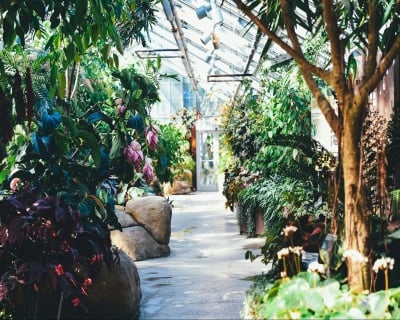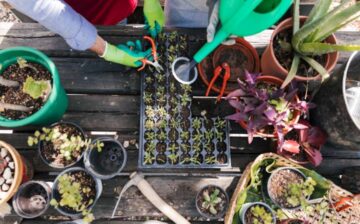Gardens are meant to be serene havens, little slices of paradise right in our backyard. But beneath that tranquil guise lies an alarming reality. Your garden might just be hiding some unsuspected dangers.
Pests with a Vengeance
Say the word “pest,” and most people think of harmless bugs. But those ants might be more than mere nuisances. Fire ants, for example, can deliver stings that feel like the fiery pits of… well, let’s just leave it at fiery. Their bites are not just irritating; they demand attention.
Then there’s the sneaky slug. Silent, with an unassuming slimy exterior. But leave them unchecked, and they’ll turn your garden into their private dining suite overnight.

These pests have been evolving resistance to common pesticides, prompting the development of even more creative solutions for pest control. Natural deterrents like diatomaceous earth or coffee grounds have become the gardener’s secret weapon against these unwelcome tenants, preserving both plants and peace of mind while ensuring a chemical-free yard.
Furthermore, encouraging the presence of beneficial insects such as ladybugs and bees can create a harmonious ecosystem that naturally keeps pest populations in check. By cultivating specific plants that attract these helpful allies, gardeners can reduce the need for harmful chemicals, fostering a more sustainable garden environment.
In cases where natural solutions aren’t enough, it’s worth considering expert assistance. For those searching for reliable and efficient ways to handle stubborn infestations, pest control near me can offer professional strategies tailored to your garden’s needs.
The Unseen Allergen Cloud
Every garden has its share of allergens. Whether it’s the fault of pollen, dust, or certain plants, reactions can be severe. From sneezes to allergic rashes, there’s no turning a blind eye to potential irritants.
Even trimmed grass can have you reaching for tissues in no time. It’s not just the flowers that bloom, demanding payment for their beauty.
The Silent Toxin Creators
Certain plants may look beautiful, but appearances can be deceiving. Nightshade and oleander can introduce some serious health risks. They’re naturally toxic and need to be handled with caution. Just a brush against poison ivy, and you’ll learn a lesson not easily forgotten.
Yet, homeowners still plant them, possibly unaware of their potential to harm both humans and pets.
Other plants like lilies, particularly toxic to cats, and hydrangeas, which contain compounds similar to cyanide, can add an unintentional risk to family and friends. Sharing your love for plants shouldn’t come with hidden hazards. Therefore, familiarizing oneself with local flora can turn a risky bush into a manageable garden beauty.
Moreover, it is intriguing how some plants develop toxins as natural defenses against herbivores. However, these defense mechanisms can inadvertently affect domesticated animals and children playing in the garden. It is important to ensure a barrier-free knowledge exchange regarding these plants by educating those around us.
Tools with a Hidden Bite
You’ve got your trusted set of garden tools, gleaming and efficient. But like mischievous sprites, they have a habit of turning against you when least expected. A rusty rake forgotten in the corner might be harboring tetanus-triggering bacteria. A pair of dull shears could lead to a nasty cut.
Remember, it’s all fun and games until someone prunes a finger.
Regular tool maintenance is vital for safety. Routinely checking for rust, sharpening blades, and storing tools appropriately can not only extend their life but also save you from unnecessary trips to the doctor. Investing in proper protective gear, like gloves and boots, can further enhance safety and transform an accident-prone activity into a leisurely pursuit.
It’s also worth employing a habit of sanitizing tools to prevent the transmission of diseases from plant to plant. Rubbing alcohol or bleach diluted with water can be used to disinfect tools, especially after pruning disease-afflicted plants. In doing so, you not only protect yourself but also the health of your garden.
Parasites Underfoot
Beware the charm of your lawn without shoes. Nematodes, tiny parasitic worms, often reside underground. Invisible to the naked eye, their numbers can multiply quickly, and in large numbers, might harm your plants. You could feel their effects without ever spotting them.
If you think they’re harmless, think again. Invasive species can even damage soil quality.
The Deceptive Toadstool
That toadstool sprouting under your tree has an allure, doesn’t it? It’s whimsical and fairy-tale-esque. But in reality, mushrooms have been tricking people for centuries. Many are deadly, turning unsuspecting gardeners into their tragic roles.
Not all fungi are friendly. Always check before consuming, napping, or interacting.
As mushrooms often surface in damp conditions, being proactive by improving garden drainage can make your yard less inviting for these slippery invaders. Composting, though beneficial, can also attract fungi, so maintaining balance in your compost pile can keep the mushroom menace at bay
Seeking the expertise of a mycologist or utilizing an identification app can greatly benefit those keen on foraging. These resources ensure that enthusiasts can differentiate between benign and toxic varieties, promoting safe and informed interactions with the fungal world in your garden.
Conclusion
The next time you step into your garden, basking in its beauty, remember it has a secret side. Not quite the harmless haven it pretends to be. Every piece of green might have its story, and not all are filled with greenery and grace.
We hope you found this blog post on The Hidden Dangers Lurking in Your Garden, useful. Be sure to check out our post Green Moving: Transport Your Garden Plants Safely for more great tips!
Have Experience in the Moving Industry? Want an Additional Income Stream? Work With All Around Moving!
Join our program! Put your experience in the moving industry and drive to good use. Profit as a moving consultant. Click here to learn more.





